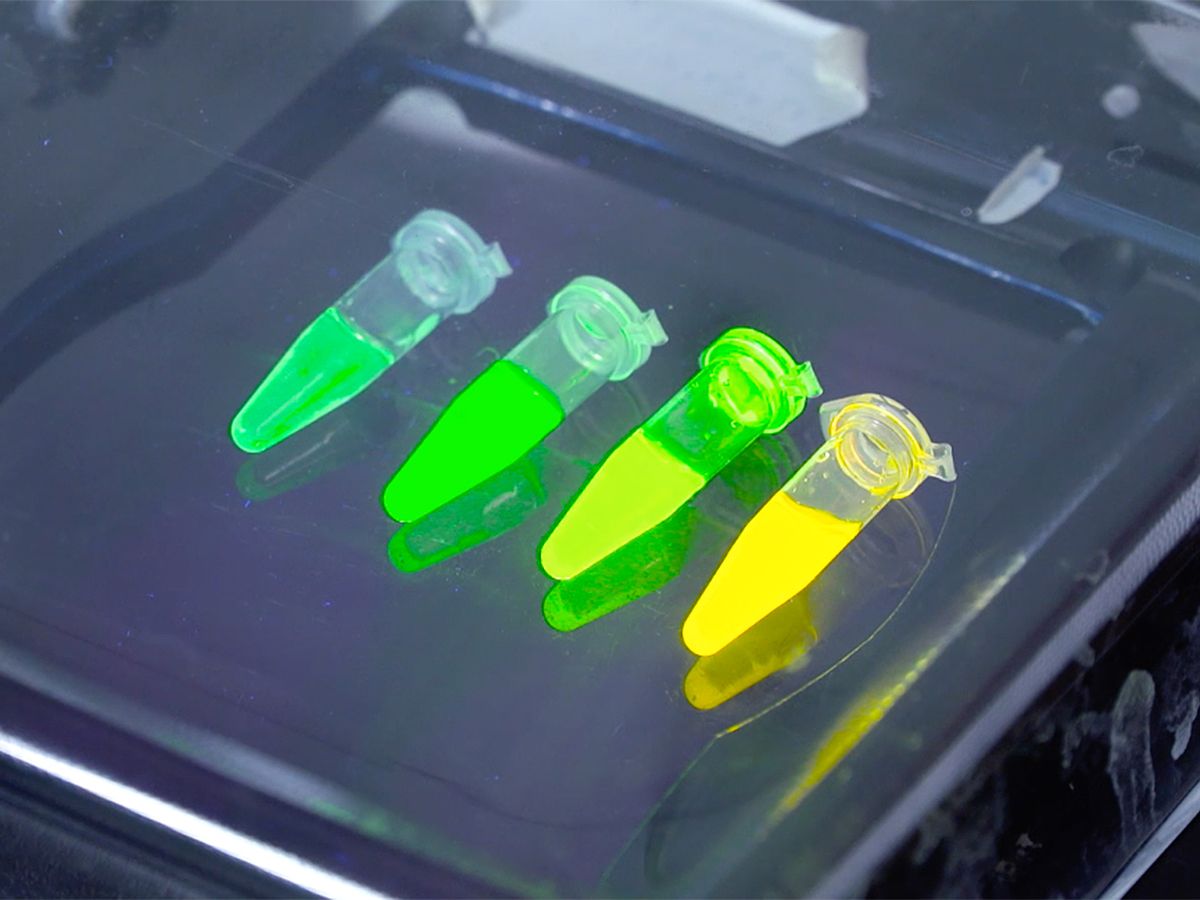Our strongest antibiotics are increasingly defenseless against the nastiest bacterial infections, but the use of new light-activated nanoparticles could give those old drugs a fighting chance. In a paper published today in Science Advances, researchers reported that quantum dots—light-activated semiconductor nanoparticles—when engineered at a particular size can sneak into bacteria, disrupt their cellular processes, and make them more susceptible to antibiotics.
The discovery could breathe new life into old antibiotics, says Anushree Chatterjee, a chemical and biological engineer at the University of Colorado Boulder, who co-authored the report. It also exemplifies how electrical engineering can be used to address problems typically approached purely though medicine.
Antibiotics—the infection-killing wonder drugs that revolutionized 20th-century medicine—have been outmaneuvered by their enemy. The toughest bacterial strains, or superbugs, can weather up to 20 different antibiotics—nearly every tool in a doctor’s toolbox. “They come up with new enzymes and new countermeasures to defeat anything we throw at them,” says Prashant Nagpal, a chemical and biological engineer at UC Boulder who co-authored the report.
The drug-resistance problem is especially bad in hospitals and on farms—hotbeds for superbugs, Nagpal says. Yet drug companies have largely failed to put new, more effective antibiotics on the market due to small profit margins.
Quantum dots have been used in engineering to achieve many technical feats, but using them to re-invigorate antibiotics is a first, Nagpal says. The dots achieve the effect by lowering bacteria’s defenses, making them more vulnerable to attack from antibiotics. It’s like hitting them while they’re down: A “one-two punch,” says Nagpal.
The dots are made of cadmium telluride, a semiconductor material that is sensitive to light. The key was to engineer them at precisely three nanometers in diameter. At this size, when exposed to visible light, electrons on the surface of the dots become excited and are transferred to oxygen molecules in the surrounding water. The oxygen molecules, with the addition of an electron, become superoxides—free radicals that mess with bacteria’s metabolism and cellular processes.
While superbugs are busy dealing with superoxides, antibiotics can slip in for the kill. “The bacteria has to activate stress-response pathways,” when exposed to high levels of superoxides, says Chatterjee. “So it changes its metabolism to counter that kind of stress, and when it does, that makes it more vulnerable to the antibiotic,” she says.

The levels of superoxide produced are just enough to affect bacteria but not human cells, Nagpal says. “Our cells can handle ten times more, so they are fine. It’s routine for them,” he says.
Nagpal and Chatterjee tested the system on E. Coli, Salmonella and another drug-resistant bacterium called Klebsiella pneumoniae. They hit them first with the quantum dots and then with an antibiotic, and found that the dot system killed the bacteria up to a thousand times better than the antibiotic alone.
The inventors say they envision introducing the quantum dots to patients by having them breathe them in, or by injection into the bloodstream. Then the patient would simply “take a stroll outside” and let the sun activate the dots, Nagpal says. Patients could also sit in a well-lit room or wear clothes lined with visible LEDs, he says.
Such light would penetrate and activate quantum dots up to a tenth of a centimeter into the body. To reach infections deeper in the body, Chatterjee and Nagpal are developing materials that respond to near-infrared light. They hope to further develop the materials and conduct animal testing so that they can move the technologies into clinical testing.
Even if they succeed, researchers will likely need to be ready with another tool to follow it. Bacteria are masters at evolving resistance, and will likely find a way to withstand superoxides too. Says Nagpal: “I’m sure they’ll fight back.”
Emily Waltz is a features editor at Spectrum covering power and energy. Prior to joining the staff in January 2024, Emily spent 18 years as a freelance journalist covering biotechnology, primarily for the Nature research journals and Spectrum. Her work has also appeared in Scientific American, Discover, Outside, and the New York Times. Emily has a master's degree from Columbia University Graduate School of Journalism and an undergraduate degree from Vanderbilt University. With every word she writes, Emily strives to say something true and useful. She posts on Twitter/X @EmWaltz and her portfolio can be found on her website.



